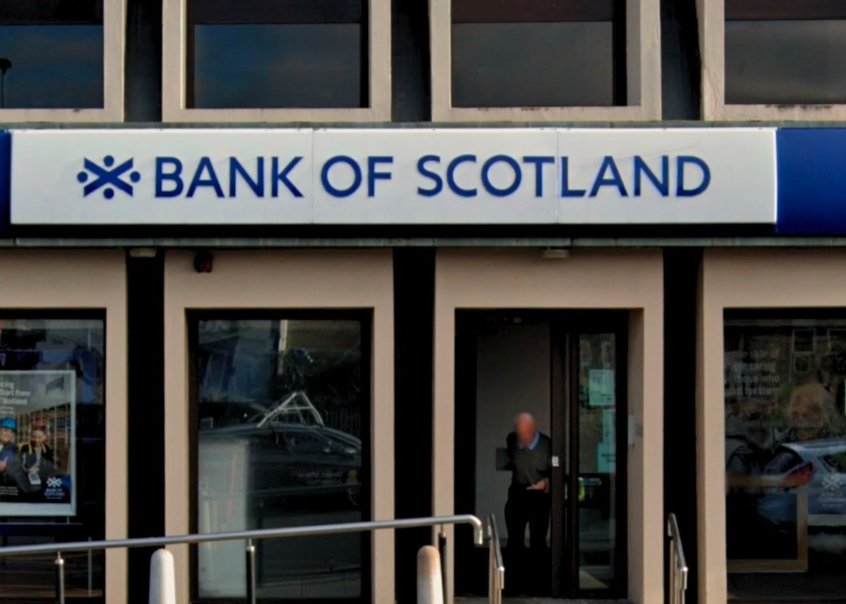Bank of Scotland plans to shut down 13 branches across Scotland in 2026 as part of a larger move by owner Lloyds Banking Group to cut costs amid rising online banking use. This decision hits rural areas hard, leaving some towns without any local banks and sparking calls from officials to rethink the plan.
Announcement Details
Lloyds Banking Group revealed the closures on September 24, 2025, affecting not just Bank of Scotland but also Lloyds and Halifax sites. The group aims to close 49 branches in total by October 2026, down from over 1,000 in recent years as customers shift to digital tools.
This wave follows a pattern of reductions, with 218 branches set to close in 2025 alone. Experts point to a 21 million user base for banking apps as the main driver, showing how habits have evolved since the pandemic sped up tech adoption.
Bank leaders stress that these changes help keep services affordable while focusing on what people need most today. Yet, the move raises questions about access in places where internet signals are spotty or nonexistent.

Affected Locations and Timeline
The 13 Bank of Scotland branches face closure at different times next year, with most happening early on. This spread allows time for customers to adjust, but it still disrupts daily routines for many.
Here is a breakdown of the locations and their planned shutdown dates:
| Location | Closure Date |
|---|---|
| Larkhall | January 2026 |
| Belshill | January 2026 |
| Tain | January 2026 |
| Glasgow Anniesland | January 2026 |
| Erskine | January 2026 |
| Gairloch | January 2026 |
| Nairn | January 2026 |
| St Andrews | January 2026 |
| Castle Douglas | January 2026 |
| Dingwall | March 2026 |
| Largs | March 2026 |
| Hawick | October 2026 |
| Grangemouth | October 2026 |
Four of these spots, including Nairn, Dingwall, Gairloch, and Tain, sit in the Highlands, where travel to the next bank could take hours. Recent data shows Scotland has lost nearly 40 percent of its bank branches in the last five years, turning some areas into banking deserts.
Impact on Rural Communities
Rural towns feel the pinch most from these closures, as they often lack quick alternatives. In Dingwall, for example, this branch is the last one standing, serving as a key spot for locals who handle cash for everything from pensions to farm payments.
Older folks and those with disabilities stand to lose the most, since not everyone can easily switch to apps or drive far. A recent study highlights how such shutdowns cut access to cash, with over 600 branches gone UK-wide in 2023 alone, leading to longer trips and higher fees in some cases.
Communities worry about broader effects too, like shops suffering from less foot traffic or scams rising as people turn to less secure options. One Highland resident shared how poor broadband makes online banking unreliable during storms, forcing reliance on branches that now vanish.
- Key challenges include limited transport in remote areas, where buses run infrequently.
- Vulnerable groups, such as the elderly, face barriers to digital tools, with 1.5 million UK adults still cash-dependent.
- Local economies could slow, as businesses depend on easy cash deposits for daily operations.
This ties into a national trend, where similar cuts by other banks like NatWest have left towns scrambling for solutions.
Official Reactions and Calls for Change
Leaders in Scotland voiced strong opposition right away. Deputy First Minister Kate Forbes, whose area covers Dingwall and Nairn, wrote to the bank asking for a reversal, noting the hit to essential services in rural hubs.
MP Graham Leadbitter called the losses deeply troubling, especially with 43,000 customers in his district left with just one distant option in Elgin. He plans to push hard, even if hopes seem slim.
Other voices echo this, with calls for more banking hubs to fill the gap. Recent rules from the Financial Conduct Authority require banks to check community needs before closing, but critics say enforcement lags. Forbes hopes for talks that lead to real fixes, like shared services or mobile units.
Alternatives Offered and Staff Support
Bank of Scotland promises smooth transitions for those affected. All staff get job offers elsewhere in the group, avoiding layoffs and keeping expertise in play.
Customers can turn to apps for most tasks, or visit nearby Lloyds, Halifax, or Post Office spots for basics. Over 30,000 PayPoint locations handle cash deposits too.
New banking hubs aim to help, with 11 planned UK-wide, including one in Grangemouth. These spots offer cash machines, counter services, and advice sessions, open to all major banks.
Still, some question if these fully replace full branches, especially in spread-out areas. The group keeps 705 sites open overall, focusing on high-use spots.
As these changes unfold, staying informed helps everyone adapt. Share your thoughts in the comments below and spread the word to keep the conversation going on better banking access.


















